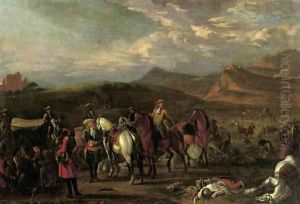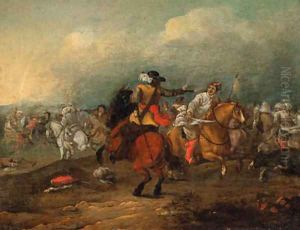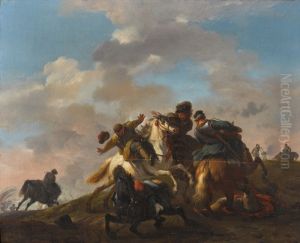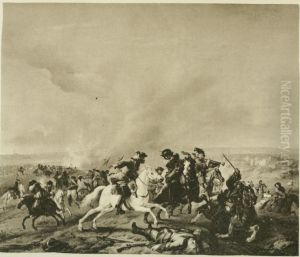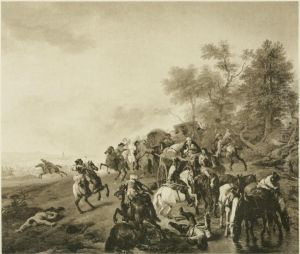Jan Van Huchtenburgh Paintings
Jan van Huchtenburgh was a Dutch Golden Age painter known for his dynamic scenes of cavalry battles, military camps, and horses. He was born in Haarlem in 1647 and was part of a family of artists; his brother Jacob was also a painter. Jan was initially taught by his father, Thomas van Huchtenburgh, before going on to study under the landscape painter Nicolaes Berchem.
Van Huchtenburgh's work was heavily influenced by the martial themes prevalent in the 17th century due to ongoing European conflicts such as the Franco-Dutch War. His paintings often depicted the pomp and circumstance of war, with a particular focus on cavalry skirmishes and the glory of battle rather than its brutality. His ability to capture the movement and chaos of these scenes made him a notable artist in this genre.
In the late 1660s, van Huchtenburgh traveled to Italy, where he was influenced by the Roman Campagna's landscapes and the work of the battle painter Philips Wouwerman. After returning to the Netherlands, he settled in Amsterdam in the 1670s. There, his reputation grew, and his clientele included not only local patrons but also European royalty, such as Prince Eugène of Savoy and Czar Peter the Great.
Van Huchtenburgh also collaborated with other artists, including Adriaen van de Velde, who would often paint the figures in his landscapes, and Johannes Lingelbach, who was known for his staffage, or figures and animals in landscapes and historical settings.
Jan van Huchtenburgh continued to paint until his later years and died in Amsterdam in 1733. His works can be found in various museums and collections around the world, illustrating the enduring appeal of his military scenes and his contribution to the Dutch Golden Age of painting.
